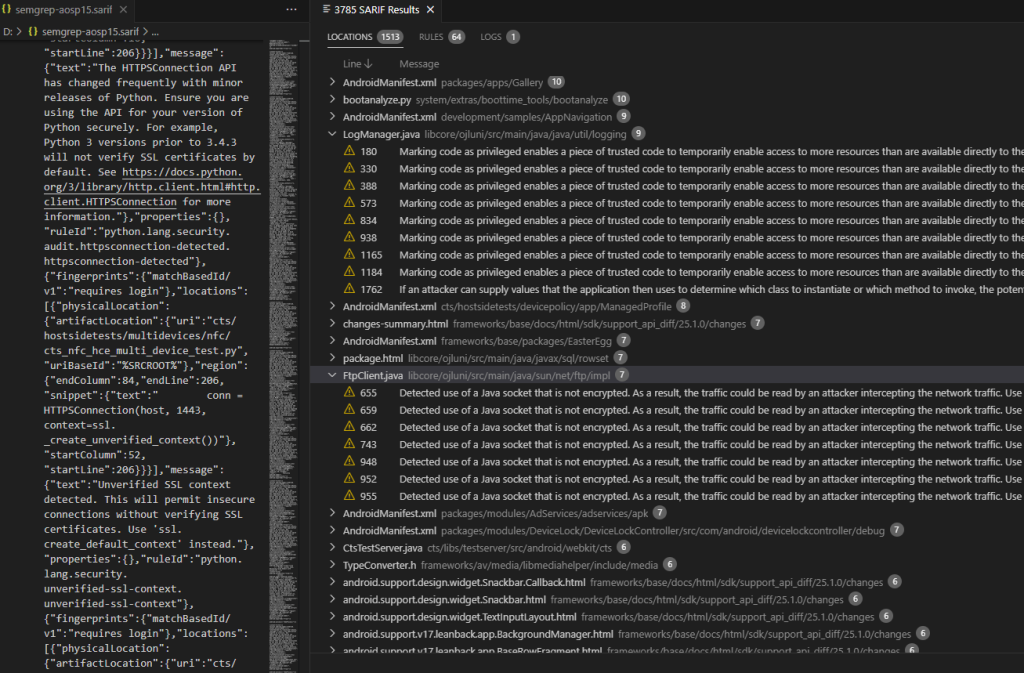Semgrep is a fast, open-source static analysis tool for finding bugs, enforcing code standards, and identifying security issues. This guide walks through installing Semgrep on Ubuntu 24.04 using Python virtual environments, scanning a large codebase like AOSP, and visualizing results in VS Code with SARIF format.
Install Semgrep on Ubuntu 24.04 (via venv)
To avoid global installations and keep things isolated, use a Python virtual environment:
# Update system and install required packages
sudo apt update
sudo apt install -y python3 python3-venv python3-pip
# Create a virtual environment
python3 -m venv ~/.venv/semgrep
# Activate the environment
source ~/.venv/semgrep/bin/activate
# Upgrade pip and install Semgrep
pip install --upgrade pip
pip install semgrep
To use Semgrep later:
source ~/.venv/semgrep/bin/activate
To exit:
deactivate
Quick Scan: AOSP with Exclusions
Here’s an example of scanning the AOSP tree while excluding large or irrelevant directories:
semgrep scan \
--config=p/default \
--exclude=out \
--exclude=.repo \
--exclude=prebuilts \
--exclude=external \
--exclude=tools \
--sarif \
--sarif-output=semgrep-aosp15.sarif \
--metrics=off
Output
┌──────────────┐
│ Scan Summary │
└──────────────┘
✅ Scan completed successfully.
• Findings: 3785 (3785 blocking)
• Rules run: 776
• Targets scanned: 287305
• Parsed lines: ~99.9%
• Scan skipped:
◦ Matching --exclude patterns: 136
◦ Files larger than files 1.0 MB: 2997
◦ Files matching .semgrepignore patterns: 7549
• For a detailed list of skipped files and lines, run semgrep with the --verbose flag
Ran 776 rules on 287305 files: 3785 findings.
💎 Missed out on 1390 pro rules since you aren't logged in!
⚡ Supercharge Semgrep OSS when you create a free account at https://sg.run/rules.
📢 Too many findings? Try Semgrep Pro for more powerful queries and less noise.
See https://sg.run/false-positives.
View SARIF Results in Visual Studio Code
Semgrep outputs results in SARIF format — a standardized format supported by security tools and code editors.
Step 1: Install SARIF Viewer
In VS Code:
- Open Extensions (
Ctrl+Shift+X) - Search for
SARIF Viewer - Install SARIF Viewer by Microsoft
Step 2: Open the SARIF File
- Use
File → Open FileorCtrl+O - Open your SARIF file:
semgrep-aosp15.sarif - The SARIF Viewer will open in the sidebar
Step 3: Navigate Findings
- LOCATIONS tab shows issues by file and line number
- Click on an issue to jump directly to the source code
- Hover to view rule details, severity, and suggestions

Did this guide save you time?
Support this site